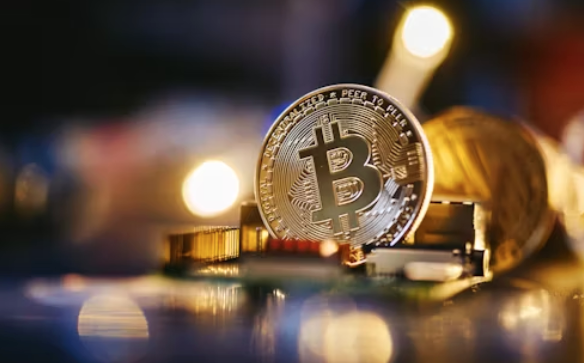From digital art to real-estate assets, NFTs have become a significant attraction for investors who look for new ways to diversify their portfolios. The first programmable blockchain in the world that enabled the creation of the Non-fungible tokens, expanding the horizons of the network. However, Bitcoin hopped on the trend, as the leader of the digital market couldn’t miss the opportunity to explore a new territory that could attract a broader audience. Bitcoin NFTs are known as ordinals, which are unique numeric codes that enable the tokenization of assets and perform similarly to the ETH ones, allowing businesses and individuals to benefit from automated processes with the implementation of smart contracts, dip their toe into real estate and showcase their talent tokenizing their artwork or they can be held as a store of value for portfolio diversification. This is everything you should know about the Bitcoin innovation:


Image source: https://unsplash.com/s/photos/bitcoin
NFTs are widely popular for representing a considerable part of the Ethereum blockchain. However, Bitcoin is now embracing this opportunity as well, starting from January 20, 2023, creating a more programmable ecosystem and, hence, expanding its use cases, going beyond being just a store of value. On the Bitcoin blockchain, NFTs are referred to as ordinals or Satoshi, which are the smallest part of a BTC unit. They are inscribed with unique numeric codes and enable the addition of additional pieces of information like text, images, or other forms of assets. So, simply put, ordinals are what allow the creation of NFTs, and, unlike other non-fungible tokens, BTC tokens can be fungible as well, and they can be used to pay for the network transaction fees and be sent as a payment to another party, so they can be used as a normal Bitcoin. For instance, the latest innovation in the BTC realm are runes, fungible tokens that expand the horizons of traditional NFTs. You can discover the potential of runes Magic Eden, which is the perfect marketplace for the transformative assets. You can buy NFT (or sell them) on dedicated markets. NFTs have many use cases that reshape the BTC network. For example, NFTs can be used for data storage, to create digital art, to create video games, or to digitalize real estate.
Each Satoshi receives an ordinal number based on the order when they’re mined, and this system allows each ordinal to be unique. After receiving this code, users and developers add data to the parcel of BTC, such as text, images, and other assets, becoming an NFT. The technical process of inscription includes the following:
The implementation of the ordinals gives Bitcoin a completely new purpose. The popular coin is well-known for being a store of value, but now that its blockchain enables the creation of NFTs, Bitcoin expands its horizons and serves the needs of developers and creators to use Satoshi in transformative ways. For instance, these are the most popular use cases for Bitcoin NFTs:
Many industries can benefit from Bitcoin immutability and high security levels to protect sensitive information like scientific information, election results, personal info of clients and other important documentation. Once the data is stored on the blockchain, it is safely recorded and no one can alter it, but since it’s on a public ledger, it is possible to verify their accuracy.
Artists have the opportunity to reach a broader audience on the Bitcoin blockchain, by tokenizing their artwork and selling it to collectors from all over the world. Also, unlike other NFTs, BTC ordinal data is stored on-chain, providing immutability of the records. The originality of the art pieces is proved by the unique numeric code, and they can be traded on the market as a regular NFT.
Many crypto-enthusiasts collect meme-inspired coins and other interesting assets that are unique, uncommon, and rare. NFT collections are common for people who are passionate about the digital market and look for exotic satoshis to have a unique portfolio.
Bitcoin NFTs minimise common disputes of the parties involved regarding the ownership and copyrighting, as it’s easy to track the history of the ownership on the public ledger. In this sense, it’s also a common feature used in real estate, to prove the partial or full possession of real-world properties.
The ordinals enable the creation of decentralized video games to provide players with a secure and private landscape for their hobby. Also, NFTs can be used as in-game items, like skins, objects and other internal purposes and they can be even traded when playing. Also, on the blockchain, many games that already exist on the traditional market have been digitalized on the web3 for an immutable version.
Bitcoin is the first and most popular cryptocurrency in the world. It’s well-known for its incredible potential for growth, so until now, investors have been using it as a store of value. However, with the latest innovations like the surge of the ordinals, the digital coin expanded its horizons to new opportunities, serving the needs of a broader audience and creating a transformative ecosystem. Bitcoin NFTs are the touch of uniqueness that the blockchain needs, and since innovations are continuously arising, so are the possibilities for crypto-enthusiasts to fully embrace the web3 market.
Denver, Colorado, 24th February 2025, Chainwire
Denver, Colorado, 20th February 2025, Chainwire
Washington, D.C., 18th February 2025, Chainwire
Dubai, UAE, 27th January 2025, Chainwire
Those who enter the market at this time may be surprised to hear that Bitcoin…
George Town, Grand Cayman, 22nd November 2024, Chainwire